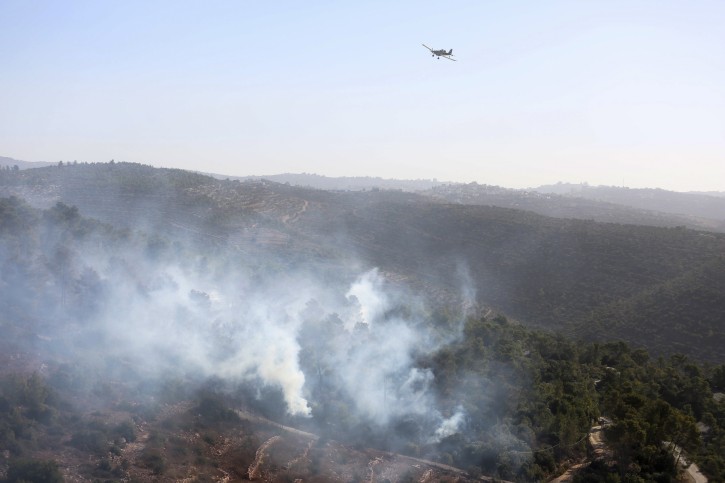
Jerusalem – Israeli students have developed a special system designed to identify wildfires at an early stage before they spread, preventing damage and even saving lives.
Developed by 17-year-old twins Gilad and Neta Drori, their system takes aerial photos taken by satellite or cameras attached to observer balloons, which then analyses and compares them using an algorithm for image processing.
The algorithm analyzes the color of the image by infrared and ultraviolet waves according to the time of the photograph, and compares the images at different times in order to ascertain if there is an indication of a fire. If one is detected an alert is then sent to the relevant authorities with the coordinates of the fire.
According to Gilad, the idea for the project came after the wildfires which ravaged Israel in late 2016. Some 2,000 to 3,000 hectares were burnt and firefighters from Israel and around the world battled 1,773 fires, at least 39 of which required at least ten crews or more.
In 2010, 44 people were killed in Israel’s worst wildfire.
The three-day Carmel Forest Fire destroyed thousands of acres of land and saw 17,000 people evacuated from their homes as well as various prisons, hospitals and military jails.
“I thought that we should develop a system that could recognize a wildfire at an early stage since once it spreads it’s hard to stop,” Gilad, who wants to be a mechanical engineer, told The Jerusalem Post.
“Alerting authorities to a wildfire when it’s just beginning is paramount,” Neta, who likes physics, added. “A fire grows in an accelerant manner because as its diameter grows its exposed to more flammable material and therefore it keeps growing.”
Their project was presented at the 12th annual “Young Engineer” conference that took place earlier this month at the Technion put on by the ORT Israel network and sponsored by Lockheed Martin.
Some 250 12th graders from 23 schools from all over the country participated in the conference and presented projects, which were divided into a number of categories including biomedicine, space, ecology, robotics and more. The projects were judged by academics, businessmen, military personnel, as well as teachers from technological fields.
According to Joshua Shani, CEO of Lockheed Martin Israel, investing in the education of the future generation of Israeli engineers is of great importance to the company.
“When ORT Israel asked Lockheed Martin through my office if we were willing to support an event at the Technion, and maybe to help them financially and say a few words I immediately said yes,” Shani, whose own father learned his trade from ORT in an internally displaced person camp following the Holocaust, told the Post.
“It was a great event and I know already that the money we contributed has already helped some students,” he said, adding that ORT had no idea of his personal connections to the organization.
According to Shani, while Lockheed Martin has been heavily involved in supporting the next generation of engineers in the US but over the past four years has been increasingly working with Israeli schools, from kindergartens through to universities.
Lockheed Martin doesn’t only “invest in airplanes,” Shani said, “there is a saying in Hebrew that the poor people of your town come first.”
The defense company has invested “lots of time and money” on cyber education for Israeli students, becoming the first in the world outside of the United States to fund activities and educational programs for students.
“We are the first, we opened the eyes of other countries and we are very proud of these activities.”
ORT Israel’s scientific engineering program was established 17 years ago and operates in 32 schools across the country. In addition to their compulsory studies, students in the program study mathematics, English, physics, engineering as well as biology and chemistry at an advanced level.
As reported by Vos Iz Neias
